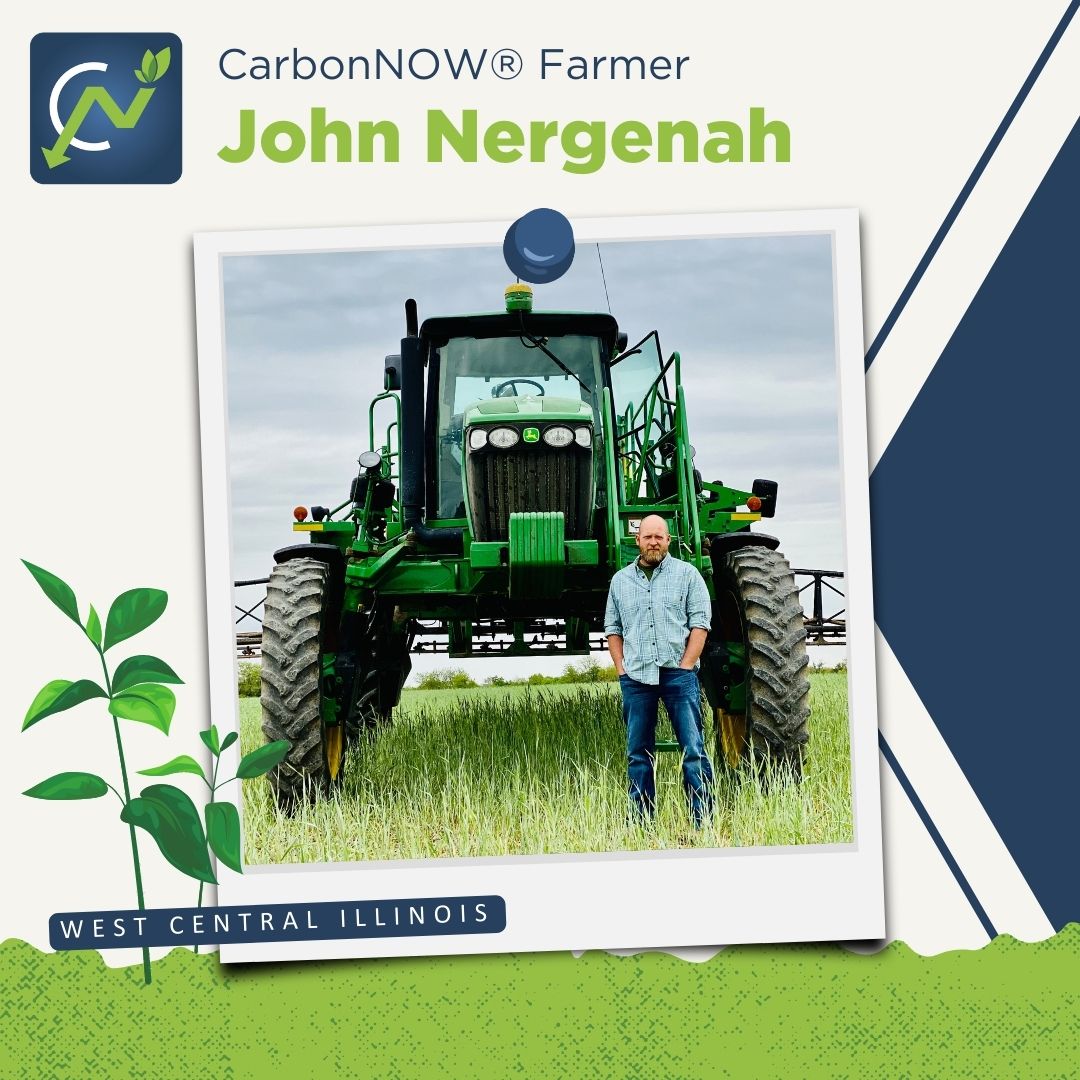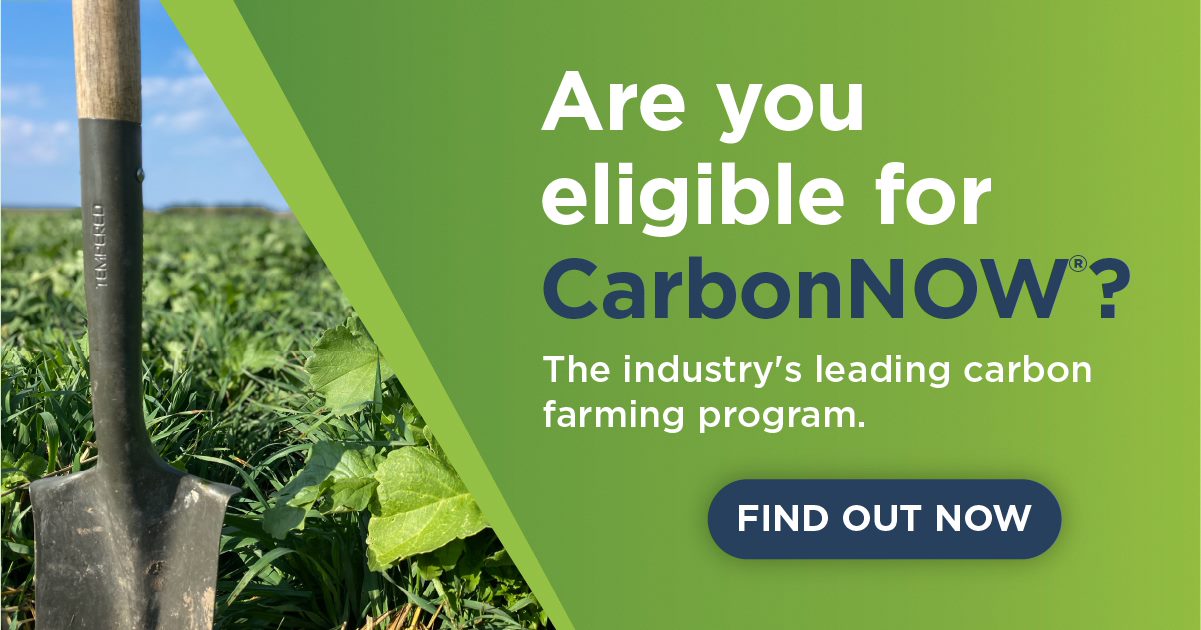

CarbonNOW® Grower Spotlight
Meet CarbonNOW Farmer John Nergenah
John Nergenah is an Illinois farmer who started growing row crops with his dad more than 20 years ago. As a 100% no-till operation, he’s seen the benefits first-hand of utilizing regenerative agriculture practices. Find out why he chose to join the CarbonNOW carbon farming program.
Name: John Nergenah
Location: West Central Illinois
Crop Types: Corn, Soybeans, Wheat
Tell us about your farming operation.
Our farm is located in the West Central part of Illinois. The closest big town is Jacksonville, IL.
I started farming with my dad close to 20 years ago with a corn and soybean rotation. This fall, we’re going to start bringing wheat back into the rotation.
Which regenerative agriculture practices do you currently use?
We’ve been 100% no-till with cover crops since 2016. Since we started no tilling, I’ve tried to reduce our dependence on fertilizers and other inputs. So with [current fertilizer shortages and higher overall costs] we haven’t felt those impacts as much as the other guys.
We also integrated livestock onto as many acres as we can. The ultimate goal is to have our cows graze throughout the winter.
What made you choose to participate in a carbon farming program?
As far as carbon markets, I didn’t look into it very much. I understood the concept, but that wasn’t the reason I was doing what I was doing with regen ag practices. I was doing it because I thought it was the right thing to do—the right way to farm.
We got started with cover crops, and with that, the benefits are clear of having green, photosynthesizing plants taking gas carbon out of the atmosphere and transforming it into liquid carbon (plant sugars).
Then, when we were contacted by a competitive carbon farming program I started exploring different program options. I believe in the practices and would do them anyway. I thought, why not make some extra money in the process?
How has your experience been with payment through the CarbonNOW carbon farming program?
Through CarbonNOW so far I’ve been paid $12/acre for 1000 acres enrolled. And if I have better carbon readings than expected, I can get even more. This keeps me going down the right path of regenerative practices.
Tell us your thoughts on Locus AG’s soil health probiotics:
I like the usability of the soil probiotics. This year we started using Rhizolizer BA that we just applied to the seed boxes, as opposed to the liquid versions I used to use.
The carbon payment offset the cost of the Locus AG products, so I’m getting those benefits without it costing me anything.
What would you tell farmers who are reluctant to enter a carbon farming program?
I’d tell them that they can try it on a small scale and give it a shot. It’s been a whole lot easier of a process than it was eight years ago when I first got started.
Everyone begs for an extra penny when selling grain, but when they get offered $9-12 an acre to sign up for a carbon program, some don’t take it. It seems kind of silly because $9-12 bucks an acre is pretty easy money. If you can get more acres paid for with carbon credits, then in the long term it’s definitely worth it.
Want to learn how Locus AG vital biologicals can increase your yields and profits?
Fill out the form below and one of our agricultural experts will be in touch.



